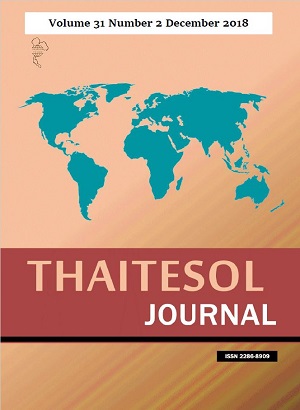THE EFFECT OF ACCENT ON LISTENING COMPREHENSION: CHINESE L2 LEARNERS’ PERCEPTIONS AND ATTITUDES
Main Article Content
Abstract
This article investigates the effect of different accents on high- and low-proficiency second language (L2) learners. It begins with testing the English listening proficiency of Chinese students and then compares the influence of three accented English (a British accent, an Australian accent and an Indian accent) on their listening scores. Finally, the findings of this paper indicate that accent has a similar influence on high- and low-proficiency learners. The Indian accent could influence test takers’ perceptions of intelligibility, and it influenced low-proficiency learners more. All learners preferred the British-accented English, but more high-proficiency learners accepted the Indian accent than low-proficiency ones. Apart from that, accent familiarity can influence listening comprehension and accent preference, but the effects were not strong in this study.
Article Details
Materials in THAITESOL JOURNAL may be photocopied for educational purposes. Under no circumstances may any part of this journal be photocopied for commercial purposes.
References
examinations.
Chan, J. Y. (2016). A multi‐perspective investigation of attitudes towards English accents
in Hong Kong: Implications for pronunciation teaching. TESOL Quarterly, 50(2),
285-313.
Harding, L. (2008). Accent and academic listening assessment: A study of test-taker
perceptions. Melbourne Papers in Language Testing, 13(1), 1-33.
Kachru, B. B. (1988). The sacred cows of English. English Today, 16(4), 3-8.
Kang, O. (2015). Learners' perceptions toward pronunciation instruction in Three Circles of
World Englishes. TESOL Journal, 6(1), 59-80.
Kang, O., Thomson, R., & Moran, M. (2018). The effects of international accents and shared
first language on listening comprehension tests. TESOL Quarterly, 53(1), 56-81.
Lev-Ari, S., van Heugten, M., & Peperkamp, S. (2017). Relative difficulty of understanding
foreign accents as a marker of proficiency. Cognitive Science, 41(4), 1106-1118.
Moinzadeh, A., Rezaei, O., & Dezhara, S. (2012). The effect of non-native zccent on Iranian
EFL learners' listening comprehension, focusing on Persian accent of English.
Journal of Language Teaching & Research, 3(5), 967-972.
Ockey, G. J., & French, R. (2014). From one to multiple accents on a test of L2 listening
comprehension. Applied Linguistics, 37(5), 693-715.
Roessel, J., Schoel, C., & Stahlberg, D. (2018). What's in an accent? General spontaneous
biases against nonnative accents: An investigation with conceptual and auditory
IATs. European Journal of Social Psychology, 48(4), 535-550.
Sung, C. C. M. (2016). Does accent matter? Investigating the relationship between accent
and identity in English as a lingua franca communication. System, 60, 55-65.


